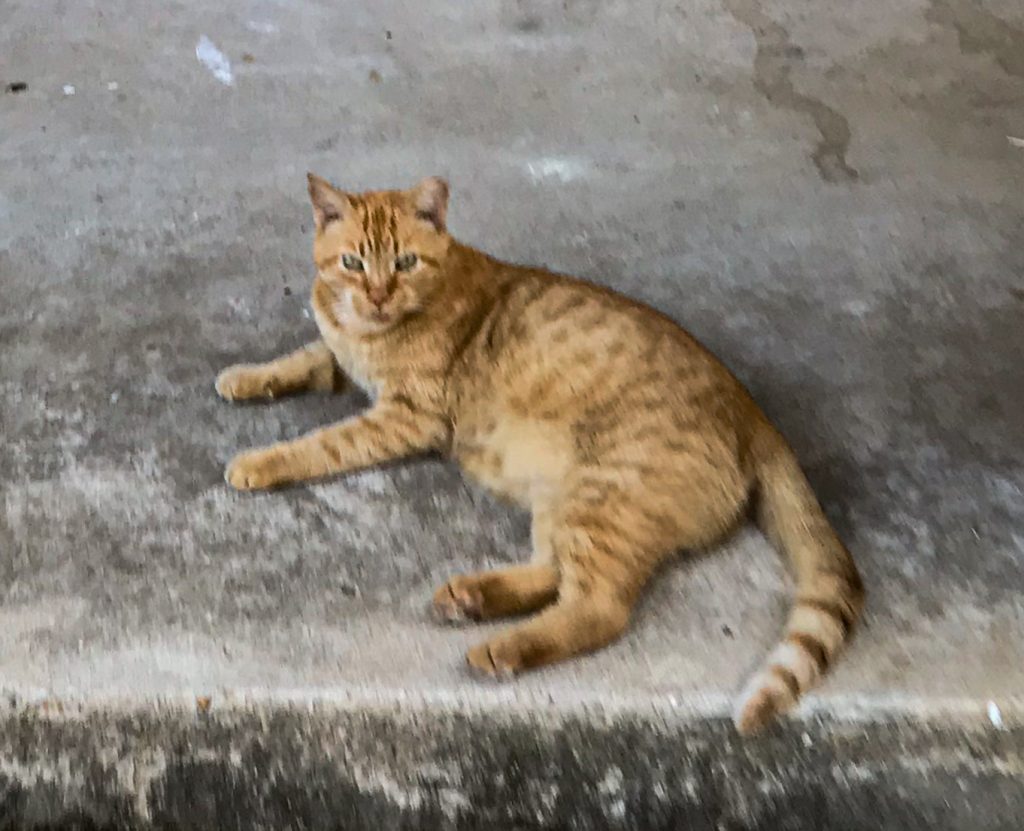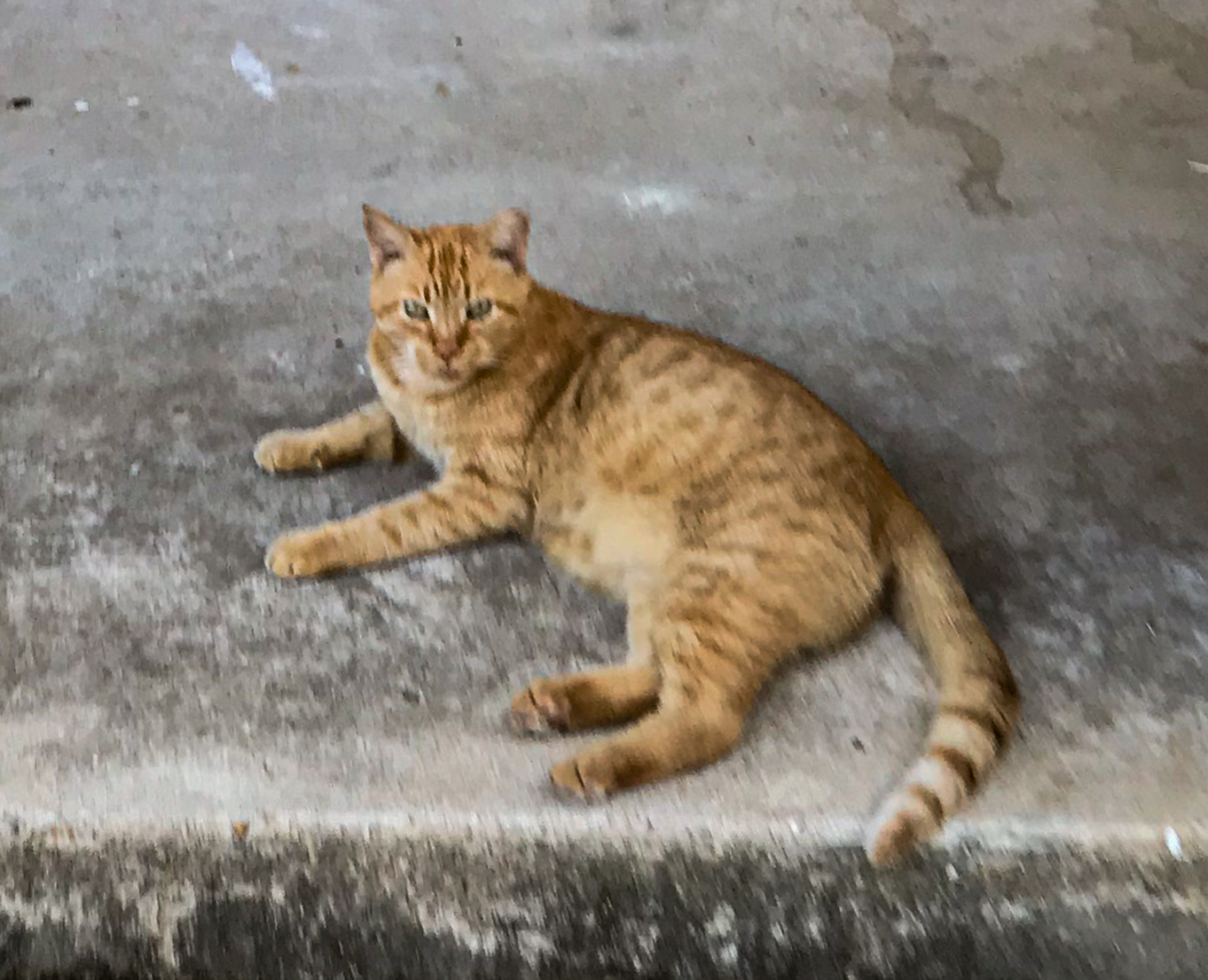
Among the Grove squirrels and few students you could encounter during a late-night walk back to your dorm, you may also notice feral cats roaming the dark, empty campus.
Many students have run into them across campus, including near the student health center, outside the library and around their apartments. They can be seen nestled under bushes, quietly trotting down dark sidewalks and lounging in parking spaces in the sunlight.
Olivia Cusimano, a senior international studies major, lived at Northgate Apartments last year and frequently saw cats lounging on porches and greeting students.
“There’s an orange tabby there that everyone calls ‘Pizza.’ He’s very sweet. I saw two little kittens there at one point, too,” Cusimano said. “Pizza would sometimes walk home with me. Like, he’d follow me from the opposite side of Northgate to my door. The girl in the apartment next to me bought a plush pumpkin animal bed and put it outside during October, and sometimes Pizza would sleep in it when it was really cold out.”
Another Northgate resident, junior international studies major Ben Hager, said he enjoys the cats’ presence, and that his neighbor even feeds the cats sometimes.
“They are really chill,” Hager said. “(Pizza) is nice and will let you pet it. Some people leave food out for them, which is why they hang around the area, I think. My neighbor leaves food out for them, so the orange (cat) likes to chill on my side of the complex.”
These few cats living outside of Northgate Apartments are among the 20-30 cats living on the university campus that are cared for by Feral University Rebel Rescuers (FURR). Started in 2002 by Lisa Hartman, the athletics travel coordinator, FURR was a solution to the overpopulation of stray cats on campus.
“There had been some discussion by administration of how to handle the cats on campus, so the group did some research and found that numerous campuses in the U.S. and around the world practiced (the trap-neuter-return method),” Hartman said. “With their guidance, and the approval of our administration, FURR was born.”
Natascha Techen, a senior research scientist in the department of pharmacognosy, came to the university in 2002 and got involved with FURR as an animal trapper.
“There were about 200 cats on campus unfixed. They were just running around everywhere. You would see them run over … It was a total mess. It was really bad,” Techen said. “So, the university didn’t like how it looked, so they decided, ‘We need to find a solution,’ and these animals have to be caught and removed, which means killing.”
Techen said Hartman, along with other university employees, were unhappy with this solution, so they offered an alternative.
“That’s when they offered the trap-neuter-return (TNR) method at no cost to the university,” Techen said. “The university agreed to the project, and it was very successful.”
The population of these cats is controlled by the TNR method, enacted by FURR. The TNR process is conducted by trapping the cats near their usual “home” on campus and taking them to a participating veterinary clinic in Oxford, where they are vaccinated and spayed or neutered. The cats’ ears are tipped to identify and monitor them. Once the cats heal, they are released back on campus, where they were originally trapped.
When the program began in 2002, there were around 200 cats living in the bushes and under porches of university buildings.
“We’ve caught about 180 animals. 80 of them were just too wild and had to be returned on campus, and the others were adopted out,” Techen said. “Now we are probably down to 20-30 animals on campus. They’re all fixed, vaccinated against rabies and monitored. If they were to fall ill for some reason,” Techen said, “we’ll go out and catch them and provide medical care for them.”
FURR is also responsible for feeding the cats using feeding stations at secret locations across campus. The stations’ locations are kept secret, as people found them in the past and poisoned the cats.
“We have 9-10 feeding stations on campus where we provide food and water in the morning, and they have to eat it up during the days so that there’s nothing leftover for the raccoons when they come out in the evening,” Techen said.
















